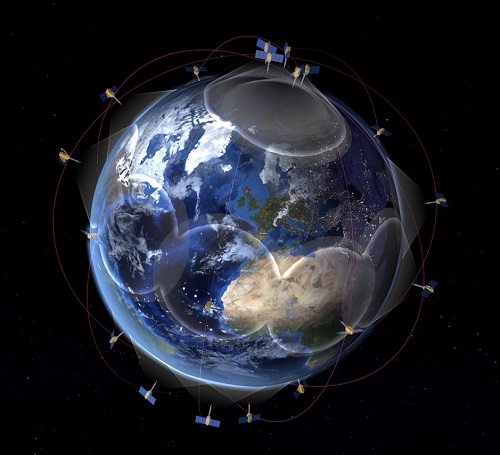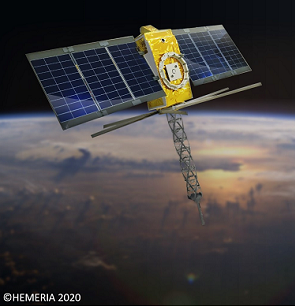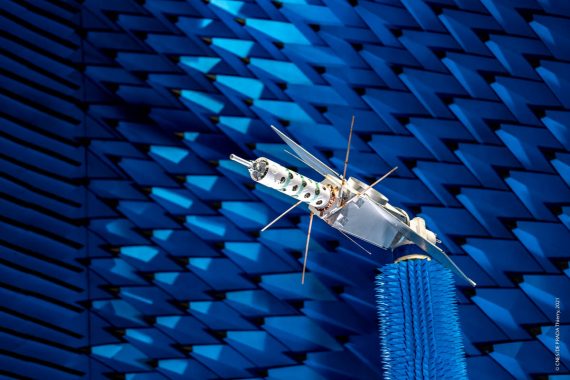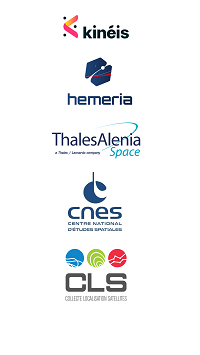Constellation update: HEMERIA & Kinéis keep us informed
- September 22, 2021
- Category: Flash info

Kinéis, 25 nanosatellites carrying the metamorphosis of the Argos system is on its way.
Our first Kinéis constellation update was earlier this year where we went backstage with Michel Sarthou, Kinéis’ Chief Technical Officer. Now, a few months later, we’re back again with another glimpse behind the scenes.
We recently had the pleasure of talking to Alexandre Tisserant, CEO at Kinéis and Nicolas Multan, CEO at HEMERIA, the company chosen by Kinéis to manufacture the nanosatellites for the future constellation.
Who better to explain the innovations being brought to you with the metamorphosis of the Argos system?
After more than 30 years supporting the international scientific community, CLS is proud to have started the Argos revolution through the creation of, Kinéis and, as the provider of this brand-new connectivity to its users from 2023 onwards, CLS aims to keep you updated throughout the Argos adventure.
Kinéis & HEMERIA: heirs to a dynasty
Kinéis and HEMERIA have more in common than most realize. Created in 2018 & 2019 respectively, both French owned companies have inherited over 30 years of experience making them key players in the field of Space Industry. Active in two major domains, Defense & Space, and with a turnover of around €45 M, HEMERIA employs 250 people.
Their goal? Add the French Touch to the Space sector. With the successful launch of ANGELS (lien vers article angels) and the upcoming 25 nanosatellites joining the constellation in 2023, it’s clear they’re well on their way to achieving that goal.
Nicolas Multan, CEO of HEMERIA since July 2019, and Alexandre Tisserant, CEO of Kinéis since its creation, joined us to talk about HEMERIA’s role in the metamorphosis of the Argos system, the innovations they’re bringing to the table and what, in this challenging adventure, they’re most proud of.


Nicolas, could you explain what role HEMERIA plays in developing the new Kinéis constellation?
We are designing the nanosatellites. It sounds simple but we’re actually designing nanosatellites that meet several technical and technological requirements in terms of environmental constraints, lifespan, and reliability. The nanosatellites will receive two payloads and, in the end, need to offer Kinéis a space segment that works and is homogeneous.
Alexandre, why did Kinéis choose HEMERIA to join you in this adventure?
It was a natural choice since we were looking to make nanosatellites. HEMERIA was accompanied by CNES in the successful development of ANGELS, a prototype of the future Kinéis satellites, and we think that they are the best on the subject.
Nicolas, can you give some examples of the innovations that Kinéis have asked of you and the challenges you’re facing?
The innovations implemented in the new constellation are, I would say, carrying on the innovations already initiated by ANGELS, most notably miniaturization. ANGELS is 10 times smaller than its predecessors but 5 times more powerful and 3 times more energy-efficient.
I suppose you could consider the antenna network a challenge due to its complexity. Fitting three deployable antennas on the same side of a satellite that is smaller than a sheet of A4 paper is a real challenge mechanically speaking and in terms of Radio Frequency!
Having said that, the antennas recently passed a number of tests at CNES confirming their capacity to perform effectively.

Alexandre, what is the status of the constellation now?
Today there are 8 satellites (legacy generation) in flight, including Angels, and they are working very well. By 2023 there will be two satellites launched by institutional partners and in 2023 we will launch the 25 Kinéis nanosatellites. Everything is in order, no delays!

Finally, what are you most proud of in this adventure?
Alexandre TISSERANT: I would say successfully mobilizing a team of partners that is almost exclusively French in an unprecedented adventure. It’s no small feat because it’s always easier to take risks that others have taken before but when you’re the first, like us in this case, it takes real courage to do it. And so, I’m thankful to all those who have participated, and I think that this is something of which we can, collectively, be very proud.
Nicolas MULTAN: I agree with Alexandre, it’s the human adventure. In terms of HEMERIA, it’s a great achievement because our nanosat adventure started back in 2009 and, until about 2016, we were out in the cold, almost us against the world and then finally it turned around. Now, through new opportunities, we’re able to see this new sector emerging and, in that lies, the real pride. And that pride goes far beyond our borders at HEMERIA or Kinéis as it involves a dozen partners, and it really is a great experience.
The Argos metamorphosis appears to be on track with its planned launch in 2023 providing enhanced technologies that will revolutionize wildlife conservation and studying our Blue Planet.
